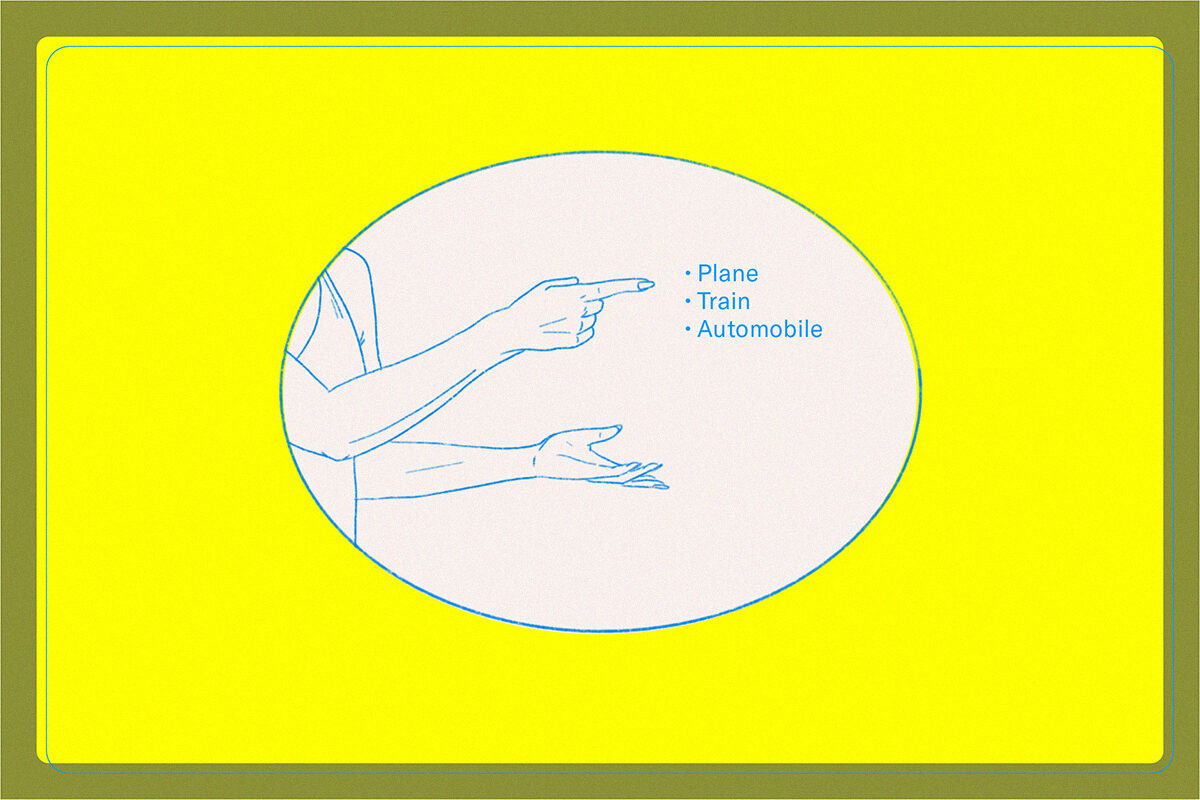The 2020 holiday season won’t be like any other year. We’re here to answer some of those burning questions about traveling for the holidays in the midst of a pandemic.
While many people have embarked on road trips or gotten more comfortable with getting on planes, traveling for the holidays will be a whole new ball game this year. Not only in terms of potentially hectic crowds, schedules, and safety precautions, but because of the added interpersonal dynamics at play.
“When we travel on the holidays, we usually leave our homes to go visit someone we love,” says Dr. Elizabeth Barnett, an infectious disease expert working on a COVID-19 vaccine trial at the Maxwell Finland Lab for Infectious Disease and a board member of the International Society of Travel Medicine. “I think if ever there was a place for what I will call ‘shared decision making,’ this is it.”
Our favorite COVID-19 travel tips→
Our experts agree that there is tremendous uncertainty when it comes to traveling for the holidays this year.
“It’s never too early to be thinking about this stuff,” says Matt Lundquist, an individual and family psychotherapist at TriBeCa Therapy in New York. “I think if there are opportunities to be together right now, we all need to be able to make the most of them because we’re all really missing each other.”
While you should always refer to federal and local government guidelines for required and recommended safety precautions, below, we tapped experts to help you navigate questions specific to holiday travel in 2020—from group travel safety to handling uncomfortable family encounters.
Should I travel for the holidays at all?
Weigh the Pros and Cons
This is a decision that only an individual and family groups can make for themselves, but if you’re looking for expert advice, both infectious disease professionals we spoke with recommended against traveling for the holidays unless absolutely necessary.
“The relatives who are elderly, close to dying—that may be a very important visit to make no matter what the risk,” says Barnett. “But you have to consider what the benefit is to all people involved in the trip compared to the risks that they’re all taking. It’s not just the people who are traveling that are assuming risk. It’s the people who are being visited—are they healthy or are they more fragile? Are you?”
Consider All the Risks
“As an infectious disease epidemiologist, my job is to consider risk and all the ways to avoid risk, and I am going to err on the side that’s more conservative,” says Jessica Malaty Rivera, an infectious disease epidemiologist and the Science Communication Lead at The COVID Tracking Project. “I feel pretty confident that I speak from the majority of infectious disease experts that it’s not defensible to tell people to take risks.”
Rivera states that the only reason she will be seeing family members this holiday season is because they live in the same city and can safely quarantine before visiting. “I think seeing family can be possible,” she says—but it’s not without very difficult challenges.
According to Barnett, there are a number of things to consider about holiday travel: “The number one thing is to think about is the conditions of where you’re leaving from and where you’re going to, and what are the differences in your exposure likely to be in both places—and along the way.”
How the travel industry was impacted by the coronavirus→
See the Silver Linings
Barnett adds that for people who are worried about managing safety precautions among family members, a year off from the holidays may be a welcome prospect, but both experts agree that these decisions will not be easy.
“People have such important traditions and family members they see only during the holidays,” says Barnett. “But for most of us, there will be next year.”
“I get no joy in telling people not to do things because I also am not doing things, but nothing is more destabilizing than a pandemic,” says Rivera. “I’m hoping that this is the last holiday season that’s going to be spoiled by this, but we’ll get through it.”
Rivera adds that the only way to completely eliminate risk is to not do anything, which may be tough if not impossible for most people. If you do decide to travel, she adds, “Everything must then be about reducing risk.”
How do I reduce risk during holiday travel?
Mentally Prepare
Lundquist invites everyone to first check in with themselves to figure out where their boundaries and comfort levels are. Many months into the pandemic, most people have gotten used to their new routines and settled into their individual realities of this crisis, but “the holidays might be the first time that we’ve had to think outside of that typical routine.”
People are so focused on getting from one day to the next that many won’t consider how much planning and prep is involved in holiday travel this year.
“Travel around the holidays is always stressful,” adds Lundquist. “If people are planning on traveling and they haven’t done that since this pandemic started, be aware that dealing with the anxiety, dealing with other people’s anxiety, at the airport or on the road, it’s just another level.”
Lundquist believes it will be more essential than ever to set boundaries. “There are a lot of assumptions about where people stand,” says Lundquist, adding that we shouldn’t assume anyone else in our travel group is on the same page as us. “The more explicit, the more direct, the more clear everybody involved can be, the better.”
How travel can help you cultivate patience→
Consider Your Transportation Options
Plane, train, or automobile? While no method of travel is entirely risk-free, our infectious disease experts definitely prefer one over all others.
“Air travel is still considered high risk, and so to the degree that it is possible, try to travel by car,” says Rivera. “But you should make those car trips so that you’re not making multiple stops.”
“If you’re driving in your own car with people who you live with, that’s reasonably safe in terms of disease transmission,” agrees Barnett. “But do you have to stop along the way? Where are you going to stop? If you’re stopping for a bathroom break—how do you know that the bathroom has been sanitized?”
In other words, it’s not only about the vehicle. If you’re considering traveling by plane, you may be enticed by the fact that since airlines have adopted safety precautions like mask enforcement and added sanitation procedures, they have seen relatively few cases of transmission. But you’ll still need to consider what your interactions with other people may be like at the airport itself, where there are many unknown and uncontrollable factors. The same applies for trains and buses, though without the added benefit of sophisticated air filtration systems.
The beginner’s guide to planning a road trip→
Practice COVID-19 Safety Precautions
You’ll need to follow the same safety precautions recommended in your everyday life for holiday travel—but you’ll have to plan way ahead. “Bring plenty of supplies,” says Barnett, including masks, sanitizer, and wipes. “Don’t count on other people having hand sanitizer or wipes or those kinds of things.”
Read all of our COVID-19 travel safety tips and resources→
Budget Time for Quarantine
One of the best ways to reduce your risk of transmission is to quarantine before and after you travel. Take a test before you go and then self-isolate—any contact outside your household poses a risk of transmission. Then, after you arrive, self-isolate again—the recommended quarantine time is two weeks.
“Most people don’t factor in quarantine time for travel,” says Rivera. “But if people can do that, if they can factor in time to quarantine, to get tested, to wait until they get negative test results, and then see their family, then it can work.”
While you wait, some book recommendations for travelers→
Don’t Rely Solely on Negative COVID-19 Test Results
Many people want to get around the time constraints of quarantine by getting a negative COVID test in order to see family members, but getting tested is not a 100% accurate way to ensure safety among family members.
“I would not feel comfortable making decisions based on rapid testing,” says Rivera. “Rapid testing is really good at detecting positives when people are symptomatic, but if that’s not the case, it’s not a good screening mechanism for going to see people. I would want to get a PCR test.”
The “PCR test” Rivera is referring to is the standard nasal swab that takes between 24-48 hours to get results, though there have recently been delays in delivering results because of strain on the system. But even with the PCR test, there is still a risk of false negatives.
“You have to take everything into context,” says Barnett, noting that someone who has been quarantining would more likely be able to trust a negative result as opposed to someone frequently coming into contact with others. But timing also matters.
“The ideal time to get tested after any possible exposure, and you can consider travel as possible exposure, is four to five days after,” says Rivera.
Antibodies Are Not a Free Pass
Unfortunately, there is no such thing as an immunity passport.
“People who have antibodies still need to be wearing masks. They still need to be practicing physical distancing and washing their hands regularly,” says Rivera. “There have been a few cases of reinfection, and the CDC says it’s pretty unlikely that it would happen within 90 days of your first infection, but why test your luck when we still don’t know all that there to know about this disease?”
Get a Flu Shot (But There Probably Won’t Be a COVID-19 Vaccine)
Both Barnett and Rivera cautioned against spreading other infectious diseases at a time when there are many strains on the healthcare system, and for that reason, it’ll be more important than ever to get a flu shot, especially if you’re traveling for the holidays. Barnett, who is working on her own COVID vaccine trial, is skeptical that there will be an option before the new year.
How Do I Reduce Risk While Visiting Others?
Set Shared Expectations About Precautions
Both Barnett and Rivera agreed that it will be essential for all parties involved in a trip to participate in setting expectations around COVID-19 safety precautions—but someone is going to need to take initiative, and that someone may be you.
“Your main job there is to sort of facilitate rather than advocate for a particular position,” says Lundquist. “The second job is to really lead with curiosity and to say, ‘I’m wondering what everybody’s expectations are.’ The group can begin to talk about what they’re concerned about, and then you can join in and articulate what you’re concerned about. But I think that there’s a kind of a kind of spirit of collaboration that comes from leading with that curiosity question.”
Lundquist reiterates that you should never make assumptions about where others stand. “The thing that people are discovering [in this pandemic] is that, for example, with a partner or a spouse, people who traditionally are on the same page are often surprised to discover that now they are not. But I think before those challenges can even be addressed, I think that people need to speak very, very clearly.”
Some people might have one set of rules and practices for how they’re operating within their family, Lundquist says, but might be open to doing that differently in a different context or on a different sort of occasion.
“This is a domain where clarity, directness, and open communication is everybody’s friend,” he says. “Some people are better at that than others, so I’m really encouraging people around all of these kinds of things to be very clear and direct.”
6 mental health lesson’s we’ve learned from travel experts→
Create a Bubble
While everyone might have varying levels of comfort and needed precautions, maintaining a strict isolation pod with your travel group will do a lot in terms of keeping everybody safe, especially if you plan to hangout indoors where there is increased risk of transmission.
“You really have to think about it like bubbles that you can’t pop,” says Rivera. “Everybody in that bubble needs to be on the same page, having very transparent conversations about who goes out when, where, and why.”
When discussing your travel bubble, a few topics to consider will be who is allowed into the bubble, who goes to the grocery store or runs other errands and when, and what precautions will be taken in those situations.
Be Vigilant About Precautions
There are many interpersonal dynamics to consider when it comes to holiday travel—how well people in your group follow the shared set of precautions may vary at times, and it may fall on you to uphold safety standards.
“The decision may come down to this: Do I create a family rift or do I protect myself?” says Barnett. “But a lot of people know their families well enough to know that those problems might crop up.”
Lundquist believes that having conversations ahead of time will help both prevent uncomfortable situations and also resolve them more fluidly if conflict does arise on the trip. If you encounter a family member flouting precautions, for example, Lundquist encourages travelers to be “very direct but also err on the side of giving the benefit of the doubt—they may have forgotten and it may simply be an oversight. I definitely think this is a situation where the sooner the issue gets raised, the less likely it is to get heated.”
Start by acknowledging the potential awkwardness, Lundquist suggests, especially if you know that the other person agreed to do some things that are perhaps more strict than what they typically do on their own. “You can say something like, ‘My understanding from our previous conversation is that this isn’t something that you always necessarily do, but we did agree that we were going to do this, so we just wanted to check in and see if you could accommodate us,’” says Lundquist.
We can see these scenarios as opportunities to grow in leadership skills and in practicing open communication with our families in ways that can extend beyond the pandemic, Lundquist adds. “This is skill building that’s really good for individuals and families under any circumstances.”
It Wouldn’t Hurt to Sanitize Your Gifts
Rivera urges gifters to do all of your shopping online to reduce risk of transmission in public places like stores, but says that transmission from surfaces like gifts is really low risk.
“It would have to be somebody who was sick getting a bunch of the virus on the package, and then somebody immediately touching that exact spot of the package and touching the mucous membranes,” says Rivera. “What you can do is wash your hands—that’s the best way to defeat surface transmission. Soap absolutely kills this virus. So if you wash your hands before and after, you should be fine.”
17 gifts that should be on every traveler’s wishlist→
Prioritize Outdoor Activities with Social Distancing
With all the prep and planning to reduce transmission, holiday travelers may forget that the point of traveling to see family is enjoying their time together. But how exactly should you go about that?
“Indoor activity is of the highest risk,” says Rivera, but she adds that she’s found ways to experience seasonal pleasures with her own family in the past several months.
“Over the summer, we took the kids blueberry picking,” says Rivera. “And I was really impressed with the farm because they did appointments and so the farm was never full of a lot of people. We’re going to look at something similar for fall, a pumpkin patch with timed entry, because that’s a good outdoor activity where you’re not going to be around a huge amount of people”
Outdoor activities will be key, says Rivera, adding that her kids love ice skating. “That could be too high risk because of the amount of people on the rink, but they’re doing ice skating with timed entry and they’re doing it so that there aren’t a lot of people and we wear masks and physical distance—that might be an activity that we do in December.”
8 pandemic-friendly art destinations across the U.S. →
(Note: Here does not provide medical advice, diagnosis, or treatment. Any information published on this website or by this brand is not intended as a substitute for medical advice, and you should not take any action before consulting with a healthcare professional.)





